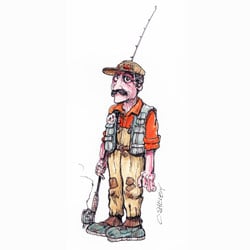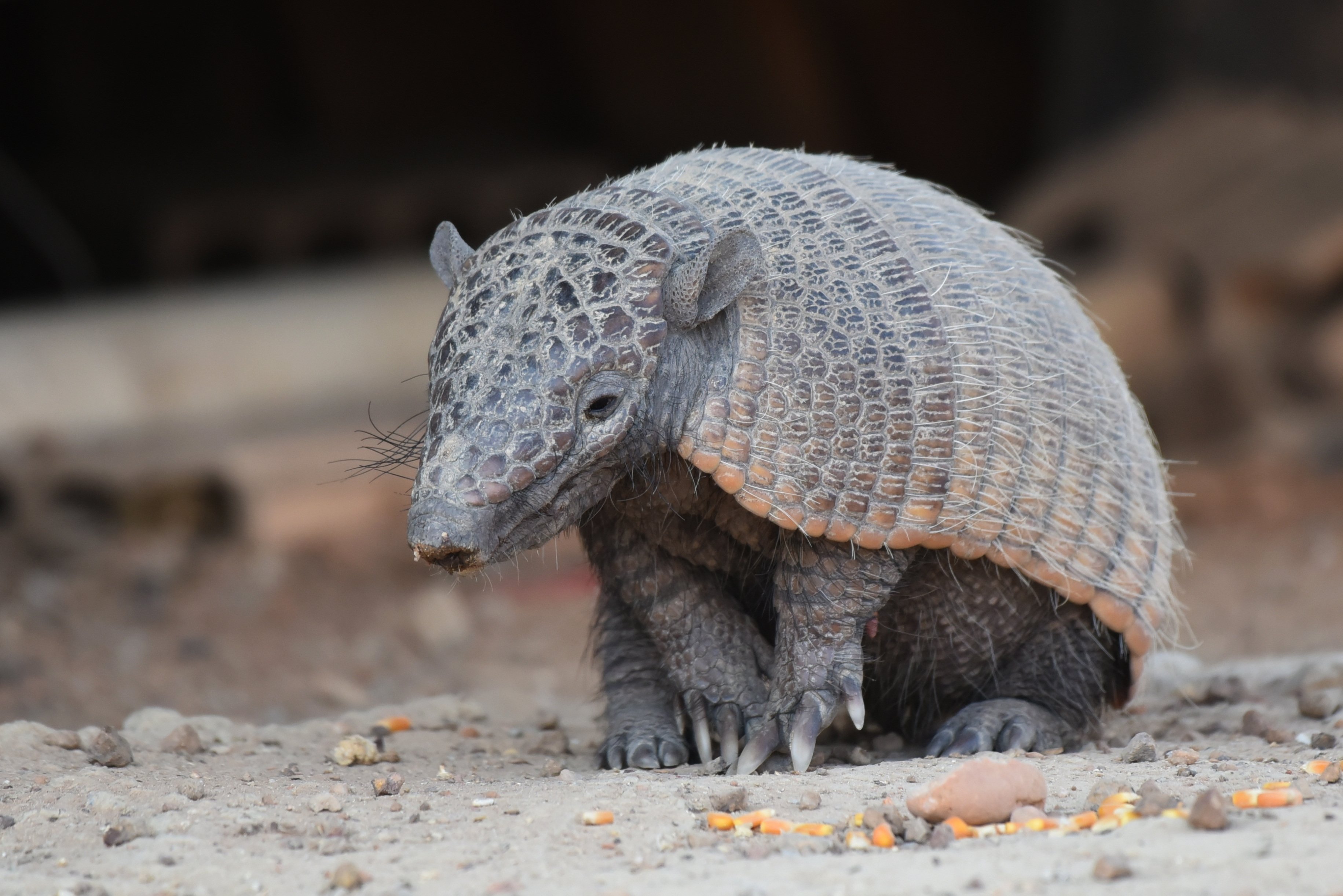Armadillos have been appearing in new Southeastern states, such as the Carolinas, surprising many residents. In this article, humor writer Jim Mize shares his experience discovering Armadillos for the first time, how they got here, and some fun and helpful facts about the behavior of these funny-looking newcomers.
A few years ago, I was viewing new photos from my trail camera when an interesting picture scrolled up. It was taken at night, and the image was of an unusual animal that well fit one of its common nicknames, the hard-shell possum.
The picture was of an armadillo.
My trail camera is set up just behind my cabin in the South Carolina mountains. This photo was my first of an armadillo. Those of you living south and west of me are probably already acquainted with these critters.

Here in the Carolinas, however, armadillos have been relatively recent arrivals
For instance, the North Carolina Wildlife Resources Commission (NCWRC) has been recording reports of armadillo sightings since the first one showed up in 2007. For the next five years, less than ten were reported annually.
Then, in 2018, the sightings began to jump. In the last two years of their data, 2021 and 2022, over two hundred armadillo sightings were reported each year.
I did a little research since it looks like armadillos are now here to stay.
For starters, we have the Nine-banded Armadillos. They are native to South and Central America.
How did they get here?
They walked and swam.
Heading north, armadillos reached Texas in 1849 and didn’t stop there. They just kept coming. You would think the Mississippi River might have slowed them down a bit, but it’s believed they crossed it in the 1940s.
Armadillos are apparently good swimmers. They can increase their buoyancy by filling their stomachs and intestines with air. They can also hold their breath and walk on the bottom underwater. If the Mississippi River can’t hold them back, chances are the other impoundments will be a breeze.
The primary shortcoming armadillos have relative to their range expansion is a lack of insulation. Extreme cold is a deterrent. But in recent years, winters have been less severe, so armadillos have kept heading north.
The entire Southeast is now part of their range and some biologists estimate they could expand well above the Mason-Dixon Line before deciding it’s too chilly.
I have also seen signs of their activity around my cabin. Moss and grassy areas have been rooted through as these critters search for insects and grubs. Likely, if you have them, your yards and golf courses have even more dramatic evidence.

Armadillo Facts
On the plus side, armadillos eat mostly insects, earthworms, spiders, and larvae. On the negative side, much of their diet is underground, so they destroy whatever is in their way of getting to their food. They also burrow, so look under that back corner if your shed starts to lean. Your building might have been undermined by an armadillo.
Even if you have armadillos, there is a chance you haven’t seen them. That’s because they are mostly nocturnal. All my trail camera pictures of them have come at night.
But if you drive much after dark, there’s a possibility you will have an encounter you likely won’t forget.
When armadillos panic, they jump, and they are quite skilled at going vertical. Sometimes, as much as three feet. So rather than letting your truck straddle and pass over them in the road, armadillos leap to about grill height.
Armadillos have also been known to carry diseases such as the causative agent for leprosy. However, according to the NCWRC, these instances are relatively rare. They report that less than ten percent of southeastern armadillos carry the disease.
Still, it’s recommended that any handling of armadillos be done with gloves and that you avoid contact with their blood and fluids.
If you don’t want them on your property, good luck with that!
Repellants don’t work particularly well. Neither does trapping. A report from the NCWRC cited one study showing that unbaited traps work about the same as baited traps, meaning neither worked particularly well. Even before you start trapping, check your state’s regulations as they vary.
Some states also allow you to hunt armadillos, but again, check before you shoot.

Armadillos do have some natural predators, including feral hogs, black bears, coyotes, bobcats, and raccoons. But they are adept at defending themselves by running away, burrowing, and using their protective covers. They are mostly vulnerable when young before their armor hardens and their skin is softer.
As creatures go, armadillos are colorful in that they have cool nicknames. For instance, they have been called possums on the half-shell, armored pigs, and Hoover Hogs.
This last name came from the Depression era when people resorted to eating armadillos for sustenance. Some reports indicated armadillos tasted like pork, thus the name.
The armadillo was also chosen as the state's small mammal in Texas
The legislation noted that the armadillo “possesses many remarkable and unique traits, some of which parallel the attributes that distinguish a true Texan, such as a deep respect and need for the land, the ability to change and adapt, and a fierce undying love for freedom.”
With a resume like this, I suppose I should welcome my new visitors. It’s not like I could keep them out anyway.
Sources:
- “North Carolina Armadillo Range Expansion 2007-2022” by Colleen Olfenbuttel, North Carolina Wildlife Resources Commission.
- “Armadillos,” a profile prepared by the National Wildlife Control Training Program.
- “Nine-banded Armadillo” North Carolina Wildlife Profiles, North Carolina Wildlife Resources Commission.
- State Symbols USA – Official State Small Mammal of Texas.

























